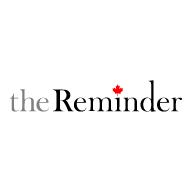The Reminder is making its archives back to 2003 available on our website. Please note that, due to technical limitations, archive articles are presented without the usual formatting.
It all happened in a split second. Montreal Canadiens forward Chad Kilger remains in hospital while doctors await an opportunity to determine the extent of a serious eye injury that could jeopardize his career. An errant stick caught Kilger on the eye in a battle for the puck during practice this past Monday. He was not wearing a visor. Doctors are concerned that Kilger may lose vision in the eye. Over four million Canadians play hockey. Men and women of all ages use rented ice surfaces, non-regulated community rinks, ponds, even roads. Adult amateurs comprise 85 per cent of non-competitive, recreational hockey players. In the late 1970s the Canadian Hockey Association ruled that all minor league players must wear helmets and face masks certified by the Canadian Standards Association (CSA). In 1981, the Canadian Hockey League made the same rule for its junior hockey players. But only half of the hockey players in Canada fall under CHA or CHL jurisdiction. All other players are exempt from regulations requiring personal protection. "Helmets and face protectors are not mandatory for most adult recreational players," notes Canada Safety Council president Emile Therien, "but that doesn't mean these players are immune to injury. Most injuries are entirely preventable by wearing protective equipment, without compromising the appeal and fun of the game." Statistics clearly show that wearing protection prevents eye injuries. In the 1974-75 hockey season, before minor hockey players were required to wear face masks, there were 258 eye injuries including 43 blinded eyes; the average age of a player suffering an eye injury was 14. In the 1992-93 season only 31 players reported eye injuries, including four blinded eyes; the average age had risen to 33. In the 2001-2002 season, only four eye injuries were reported, including two blinded eyes. Mr. Therien credits this drop to the protection provided by the face masks. A total of 311 eyes have been blinded since 1972. Not one of these injuries was suffered by a player wearing a Canadian Standards Association (CSA) certified full-face protector. However, during the past few hockey seasons, nine players have suffered a blinding injury while wearing certified visors (half shields). In all cases, it is suspected the visors were not properly positioned. Helmets must be secured to the head by a taut chin cup, not a loose neck strap. Some professional hockey players won't wear proper protective gear. Their excuse? Face protection is restrictive and could interfere with their performance. In the NHL alone, players not wearing a shield account for 95 per cent of all eye and face injuries requiring treatment. The fact the big leagues have not made such equipment mandatory flies in the face of common sense and injury prevention, says Mr. Therien. "Not only that, it sets a terrible example for the public." The Canada Safety Council recommends that hockey players of all ages, whether organized or not, should wear a CSA-certified helmet and visor to protect the head and eyes. See 'Protection' P.# Con't from P.# Head and Face Protection For Hockey Replace your hockey helmet every seven years, and never buy a used one. In older helmets the plastic may weaken and lose its ability to absorb impact, or the lining may deteriorate. Look for the CSA mark. That assures the helmet and face protector meet or exceed existing CSA safety standards. The helmet should fit snugly; secure it to the head by a taut chin cup. The face protector can be fastened to the helmet. Never tamper with your equipment. Cutting the wire of a face mask dangerously weakens the whole structure - CSA certification assures protection with good peripheral vision. Loose chin straps or a thin liner reduces a helmet's ability to prevent a concussion. Make sure the wire structure on your face protector is solid and there are no broken wires. Inspect plastic visors or protectors for scratches (which may limit vision) or cracks (which weaken the structural strength). If your helmet is cracked, discard it. CSA-certified hockey helmets can sustain more than one impact, but a crack signals very serious damage.



